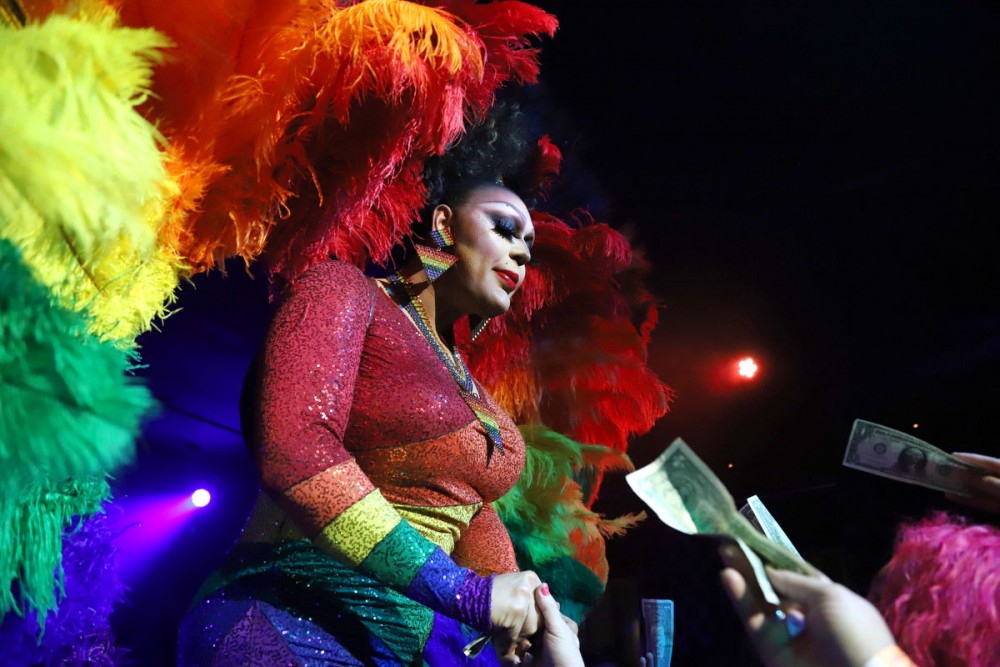Backstage at the Gay 90’s was a scene of organized chaos last Friday. Stationed in front of mirrors, drag performers powdered their faces and penciled in tall arched eyebrows before a performance for Pride weekend.
One queen applied a harsh line of brown contour to her cheekbones using the edge of a credit card as a guide, while another carefully attached a large mess of blonde ringlets to her head, securing it tightly so it wouldn’t fall off during her routine.
For the Ladies of LaFemme, the cast of a long-running drag show at the Gay 90’s — and a handful of visiting drag queens — drag performance is much more than a pretty face (although that is certainly important, too).
“To me, drag is like an embodiment of all the little things I’ve loved over time that are somehow mashed together when I’m in drag,” said performer Jaida Essence Hall. “Like fashion and art and makeup and beauty and modeling … all the things I love I get to do as a job.”
In recent years, drag has become mainstream, boosted by the popularity of the reality show competition “RuPaul’s Drag Race.”

Prada Diamond, the show director at the Gay 90’s, said when she first became involved in drag, not many gay bars were very welcoming.
“We weren’t treated super nicely by the community just to go out in drag,” Diamond said. “Drag is just super accepted now, and very mainstream … It’s super cool to watch it become something totally different.”
For many performers, drag is a way for them to express their feminine side while also practicing self-love.

Mercedes Iman Diamond, who appeared on “RuPaul’s Drag Race” in Season 11, was the first Muslim drag queen on the television show.
She believes drag helped her learn to love and respect herself, especially when she went through some difficult times in her life.
“To be a role model for all these kids today that are scared, that think they’re different, that they’ll be disowned — it’s okay to have a different culture, to have a different religion,” she said. “Follow your heart.”

Mercedes Iman Diamond is one of Prada Diamond’s “drag daughters,” a practice in the drag community where more experienced performers take in up-and-coming queens and offer advice, love and support.
Drag daughters commonly take on their parent’s last name, which holds weight in the community. These relationships can be especially important for members of the community who are not accepted by their biological families.
“You learn in the gay community what the true meaning of family is. Family doesn’t mean blood. Family means people that are there for you through thick and thin and accept you for who you are,” said Brandonna Dupri LaReese, the host of the evening and a former Miss Gay United States. “Through drag, a lot of us do create drag families to have our own family.”
“My drag mother, she means the world to me. You know, to have someone to call ‘Mom’ and … talk about things in life and to give you advice and tell you that they love you — I wish I could have that with my mom, but I don’t.”
Through drag, she has been able to find a community that loves her and that truly accepts her for who she is.
“You get to be who you want to be on stage. This is your chance to show the world what you want them to see and who you want to be,” Dupri LaReese said. “I’m going to do drag until I can’t walk anymore.”









